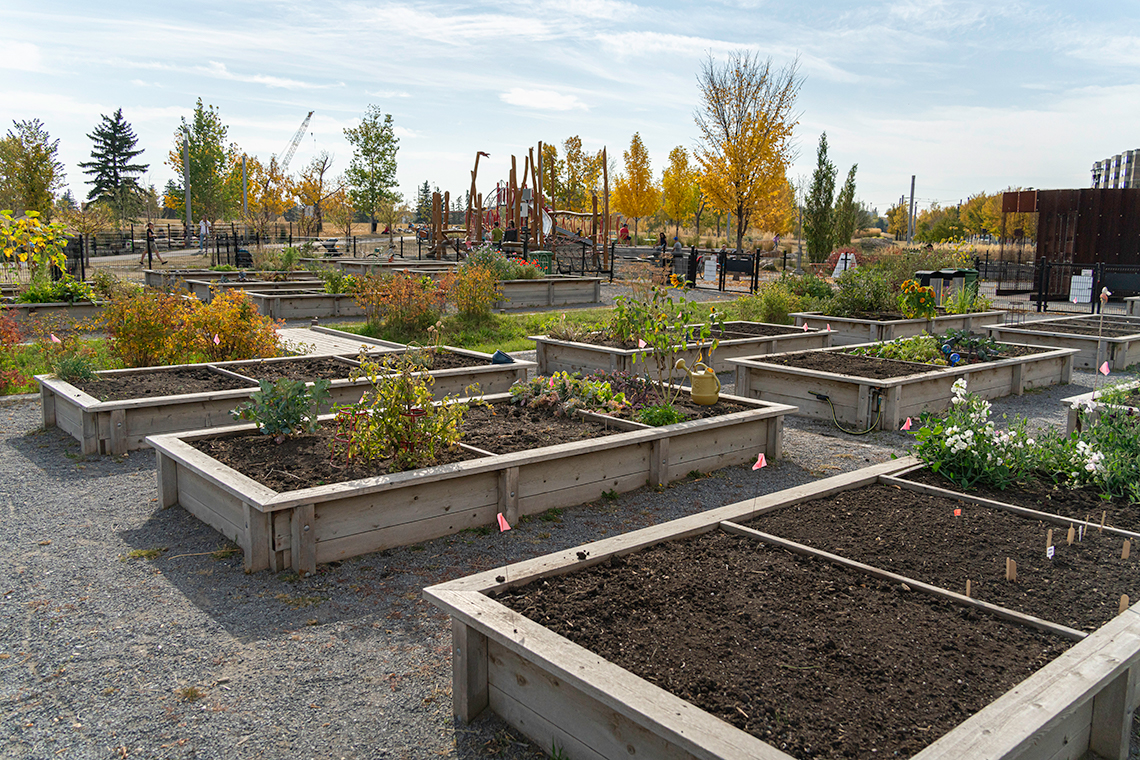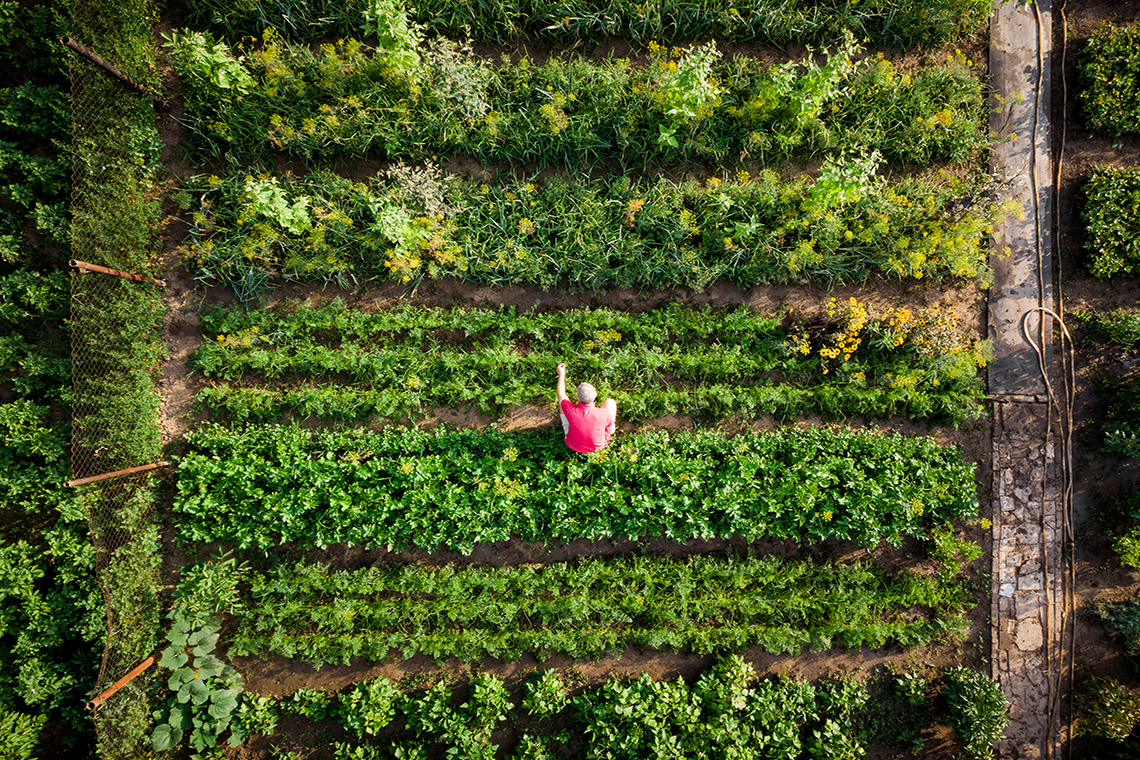Minds On
What is a community garden?
Community gardens are plots or specific areas of land that are planted by individuals or groups. They are designated plots of land found in communities where there may be limited green spaces.
Groups and individuals are allowed to grow and harvest their own fruits, vegetables, herbs or flowers in the assigned plots.
Explore the following images. What do you notice? What do you wonder?
There are many different ways to organize plants in a community garden. What do you notice about the organization of the specific community gardens explored in the carousel of images.
How do they tend to organize their plots?
Pause and Reflect
Pause and reflect
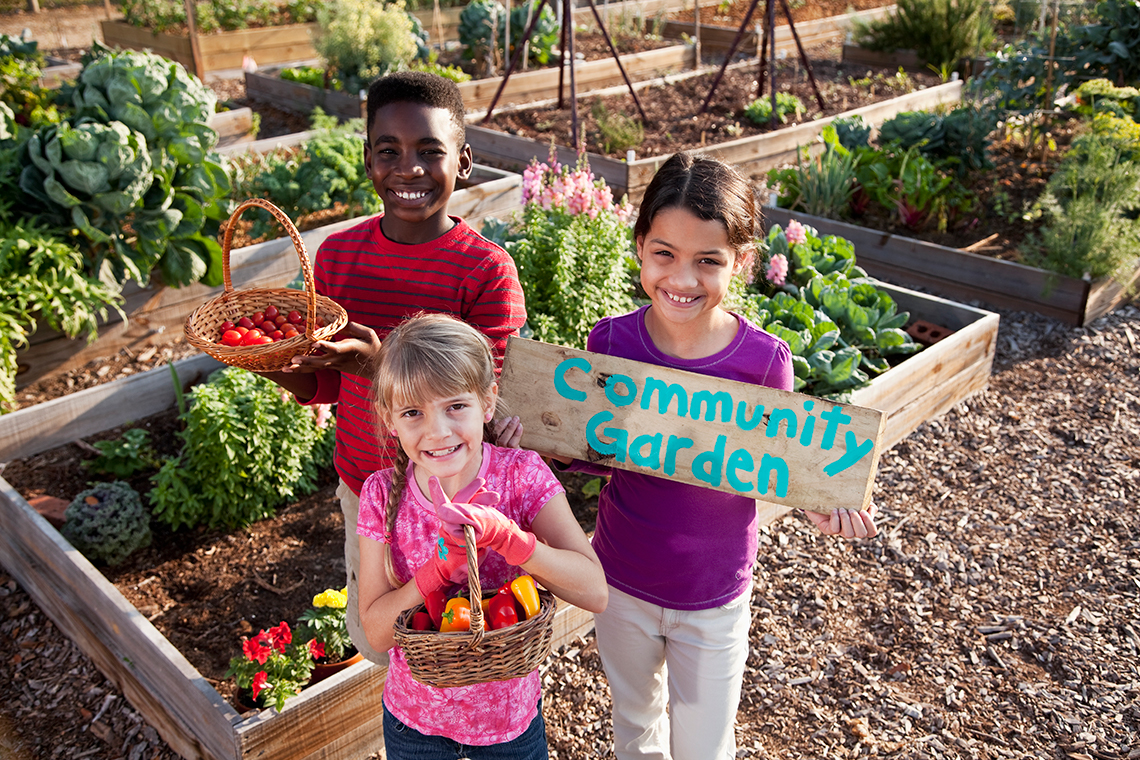
Reflect on the following questions:
- Have you experienced a community garden in your own school and/or community?
- If you could create your own garden, what might you grow?
- How might you organize your garden? Consider creating a sketch or diagram.
Action
Global Roots garden
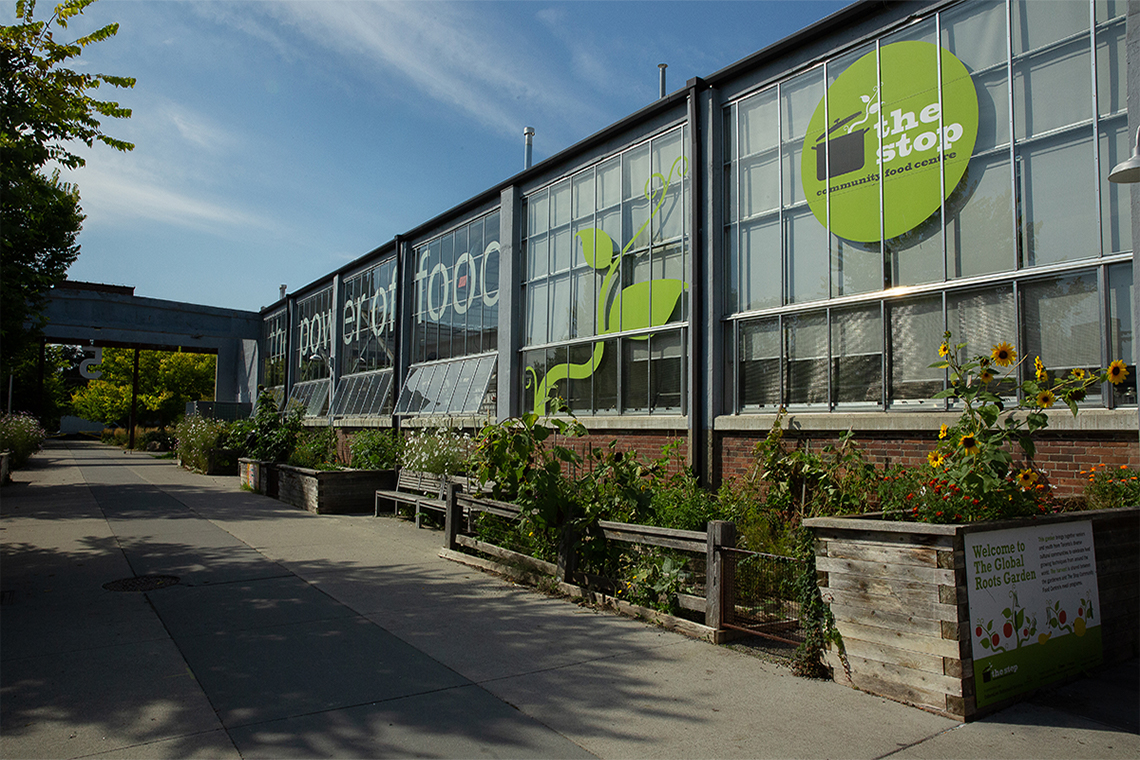
The Global Roots Garden outside of the Wychwood Green Barn.
The Wychwood Green Barn, run by an organization called The Stop, offers a green house and community garden.
The community garden, called the Global Roots Garden, contains several garden plots that have been created by different members of the community. Each member represents a particular part of the world, and they bring their culture to the gardens by planting what is specifically important in their cuisine.
How might community gardens such as the Global Roots Garden benefit different members of the community?
Press ‘Possible Answer’ to access a few ways community members might benefit from a community garden.
Benefits of a community garden may include:
- access to a diverse range of fruit, vegetables and herbs
- free sources of nourishment to members of the community
- allows members of the community to learn about different cultures through food
- adds green spaces and pollinator plants to local communities
Organizing plots

Imagine that your school or community is going to be creating their own community garden for anyone to enjoy and make use of the fruits, vegetables and herbs planted there.
There are 3 square garden plots. Each plot gets split into fourths to create different planting areas that will be planted by three different helpers: Helper A, Helper B and Helper C.
Explore the following image of each planting area.
 Description
Description
Top view of three large square plots, in a row, each filled with dirt. Each plot is divided into 4 sections/quarters. In the first plot, each quarter is labelled at its centre with the letter A. In the second plot, one quarter is labelled at its centre with the letter A, and the other three are labelled with the letter B. In the third plot, one quarter is labelled at its centre with the letter B, and the other three are labelled with the letter C. There is an arrow with a label that points to one of the quarter sections in one of the plots. The label reads “Each plot is split into quarters. One section = ¼.”
Brainstorm
Brainstorm
Helper A will be planting a portion of the plots. What strategy could we use to find out the portion Helper A will be planting?
Record your thinking using a method of your choice.
Let’s examine one possible solution that involves multiplying a whole number by a unit fraction.
If you are not familiar with what a unit fraction is, press ‘Definition’ to access an explanation.
A unit fraction is any fraction where the numerator is 1. For example: , , or .
Every fraction can be broken down, or decomposed, into unit fractions using repeated addition.
For example:
Helper A’s portion
Helper A is assigned 5 one-fourth sections of the plots. As a math statement we would record this as:
Multiplication is repeated addition. This means we can change our multiplication question to a repeated addition question, like this:
So, the portion of the plots that Helper A will plant is .
What is Helper B’s portion?
Let’s examine the garden plots once again.
 Description
Description
Top view of three large square garden plots, in a row, each filled with dirt. Each plot is divided into 4 sections/quarters. In the first plot, each quarter is labelled at its centre with the letter A. In the second plot, one quarter is labelled at its centre with the letter A, and the other three are labelled with the letter B. In the third plot, one quarter is labelled at its centre with the letter B, and the other three are labelled with the letter C. There is an arrow with a label that points to one of the quarter sections in one of the plots. The label reads “Each plot is split into quarters. One section = ¼.”
Student Success
Solve the missing information
Can you create a multiplication sentence for how many portions of all the plots Helper B will plant?
In a notebook, or using another method of your choice, complete the missing information to solve for how many portions of all the plots Helper B will plant.
(as repeated addition)
(as a fraction)
So, the portion of all the plots that Helper B will plant is _____ .
Helper C’s portion – Your turn!
Using a format of your choice, record your strategy for solving how many portions of all the plots Helper C will plant.
When you’re ready, press ‘Answer’ to access a sample solution.
So, the portion of all the plots that Helper C will plant is .
Dividing planter boxes
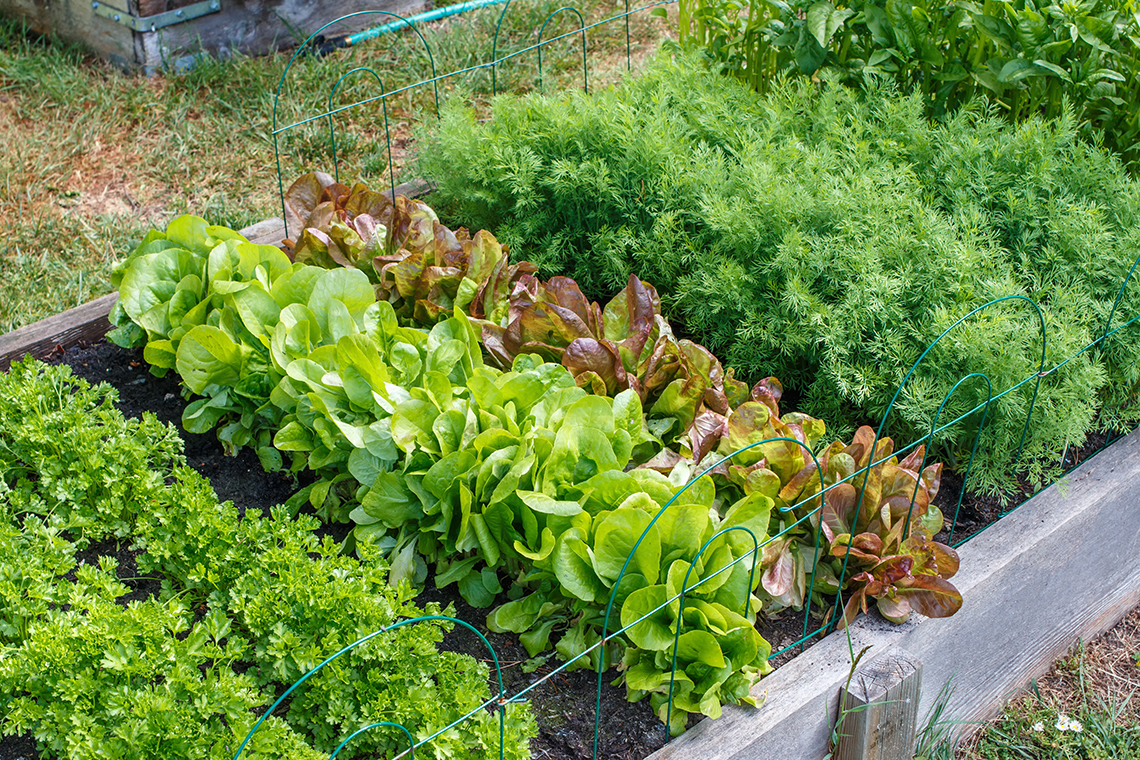
Often in community gardens, rectangular planter boxes are used to make use of smaller spaces in an efficient way. They also allow fruits, vegetables and herbs to be planted in rows for easy care, identification and harvesting.
Examine the following image that shows 3 rectangular planter boxes that have each been divided into thirds.

How many sections are there in the 3 planter boxes?
As a math statement we could write this as:
We can model dividing by a unit fraction like this:

Fraction strips are also a handy tool to model dividing a whole number by a unit fraction. Examine the following image that models our problem using fraction strips:
 Description
Description
Three 1 whole fraction strips in a row. Below them are one third pieces clustered in groups of three. Text reads: 3 divided by one third equals question mark. Or, how many thirds are there in 3 wholes?
So, 3 planter boxes divided into thirds gives us 9 equal parts. As a math statement, this would be:
Practice

In your notebook, or using another method of your choice, record your strategy and solutions for at least two of the following multiplication questions and at least two of the following division questions. Try to express your final answer in lowest terms.
| Multiplication | Division |
|---|---|
When you are ready, press ‘Check Your Work’ to review the answers in lowest terms.
| Multiplication | Division |
|---|---|
Consolidation
Create your own math problem

Examine the following math statements.
Create a math word problem for each statement and then solve them using a strategy of your choice.
Record your thinking in a notebook or using another method of your choice.
Press ‘Hint’ to access some suggestions for themes/topics to consider for your word problems.
- Food/cooking
- Measurement
- Gardening
Reflection
As you read through these descriptions, which sentence best describes how you are feeling about your understanding of this learning activity? Press the button that is beside this sentence.
I feel...
Now, record your ideas using a voice recorder, speech-to-text, or writing tool.
Connect with a TVO Mathify tutor
Think of TVO Mathify as your own personalized math coach, here to support your learning at home. Press ‘TVO Mathify’ to connect with an Ontario Certified Teacher math tutor of your choice. You will need a TVO Mathify login to access this resource.
TVO Mathify (Opens in a new tab)
